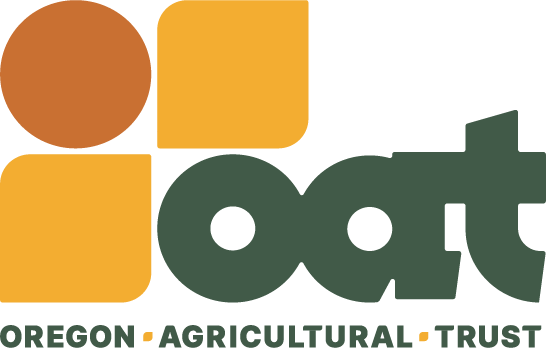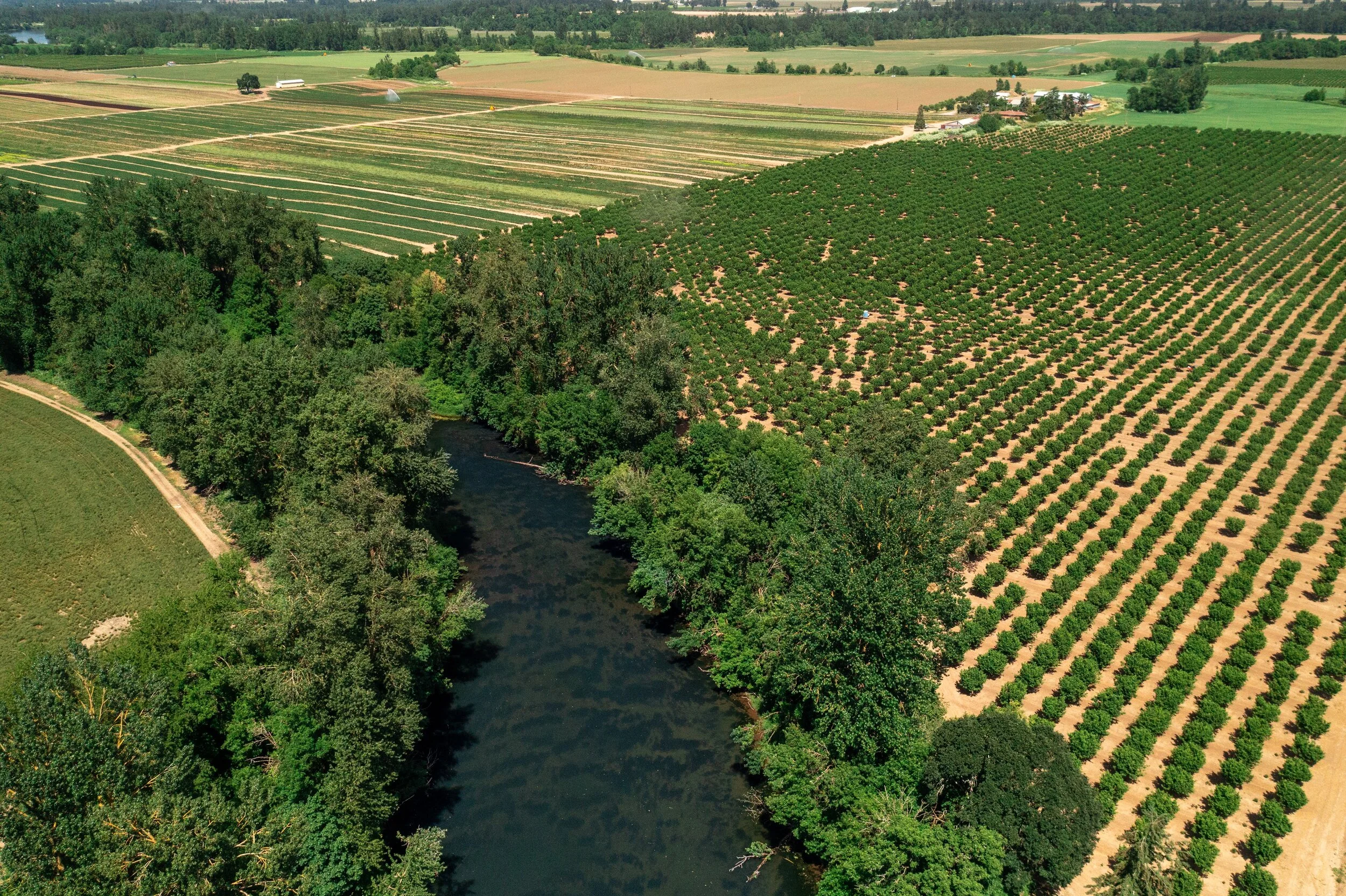By Alice Williamson
When a colleague or Board member asks “What do you do in a typical day?” I often find myself tongue tied because no two days are the same. This is my attempt to pull back the curtain and shine light on how I spend my workdays as the Farmland Program Director at OAT.
For me, work starts around 9 am with my second cup of coffee. I work my way through emails, reading and responding to those that don’t need heavy research. I’m constantly impressed by the volume of data and reports that cross the virtual desks of OAT’s staff. We receive industry reports, conservation financing publications, updates from partner organizations and grant programs, and, of course, Capital Press articles. My favorite inbox treat is Ed Roberson’s weekly newsletter Good News From the American West.
OAT’s Executive Director Nellie McAdams, Rangeland Program Director Marc Hudson, and Farmland Program Director Alice Williamson in their daily huddle.
After emails, I hop on my daily Google Meet huddle with Nellie and Marc. Launching a new non-profit, fully-remote office amidst a global pandemic is tough. These daily check-ins are our touchstone for building community and incorporating predictability and accountability into our weeks. We easily fill an hour with project updates, debriefing each other on meetings from the day before, and talking about upcoming events - Board meetings, site visits, technical trainings, and ideas on how to be innovative in our approach to farmland preservation. Marc is filing these under “Wild and Hairy Ideas.” I anticipate that a few of them will be applied in OAT’s work in the coming years. Perhaps more than a few...
My late morning and early afternoon calendar changes daily, but the constant activities are the core of my work - phone calls and visits with farmers, partner meetings, and researching financing. Today I spent an hour on a preliminary call with a young farmer looking for property in the Willamette Valley. Prices are high, especially if the farmhouse is in good condition so she is hoping conservation funding can help. I enjoy hearing stories of people and land, so I’m happiest in these early conversations when I’m learning why people farm and how they came to know about OAT. Like most conversations with farm-seekers, I gave her an overview of conservation easements, the timeline of a typical transaction and asked that she introduce me to the current farmer. If the current farmer is patient and shares in the goal of preservation, we may be able to partner. Of the many beneficial impacts OAT will have on Oregon’s agricultural future, helping new farmers access land is one that I’m most excited about. I leave the call feeling challenged and motivated.
As the day progresses, I dig into the internal workings of our Farmland Preservation program. Working closely with Marc, my rangeland counterpart, I’m creating our processes and procedures for real estate transaction due diligence and documentation. I start planning for a farm visit later this week, looking at soil maps, water rights certificates, and county planning rules.
While my day is wrapping up, I catch a headline alerting me to a brush fire in Wasco County. My thoughts turn to the farmers and ranchers who have generously given their time and input on OAT’s strategic conservation plan for 2022 - 2027, and with whom OAT will be partnering to protect working farms and ranches in the years to come. As I close in on my first year at OAT, I’m continually humbled by the fortitude, determination and hard work of Oregon’s farmers and ranchers. I keep this in mind as a glance through the OAT calendar for tomorrow, next week and next month.


